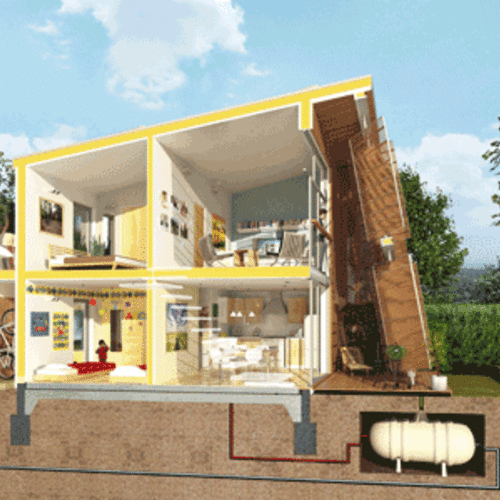
Image Credit: Department for Communities and Local Government
Among the challenges posed by the Code for Sustainable Homes, a system adopted in the United Kingdom to rate the energy efficiency of new housing, are the costs of compliance.
That’s obviously true anywhere stricter code is enforced, but in the U.K. cost took on added importance as the code – which rates building performance on an ascending scale, from Level 1 to Level 6 – was made mandatory for new construction in 2008, just as the housing downturn tightened its grip. New homes, in fact, are required to meet Level 3.
The cost of compliance is falling
It turns out, though, the average cost of Level 3 compliance, which was expected to gradually decline as design, materials, and construction techniques were adjusted, has fallen more quickly than anticipated, according to recent research. What that might mean for homebuilders in the U.S. as code requirements evolve here is difficult to determine at this point, but it at least shows builders, designers, and manufacturers are highly adaptable, ingenious bunch.
A study of Code for Sustainable Homes compliance costs, published in August by the U.K.’s Department for Communities and Local Government, shows that average extra costs for homes built to Level 3 fell 75% in a three-year period, from $7,237 in 2008 to $1,831 in 2010. The study covered construction costs for two-bedroom apartments, three-bedroom attached dwellings, and four-bedroom detached homes in a variety of settings.
A better envelope, not a solar array
Although the U.K. introduced a more stringent baseline code last year, called Part L 2010, the study used an older baseline, Part L 2006, since relatively few buildings have yet to be built to the 2010 standard.
Projects built to meet the Level 4, 5, or 6 rating standard were on average significantly more expensive to design and build – and fewer in number – than Level 3 dwellings, the study noted, although some U.K. builders say they have found ways to reduce costs even on Level 6 projects by using modular slab and wall components and shared graywater systems for reducing overall water consumption.
The study found that while some Level 3 projects boosted their energy efficiency performance with help from renewable-energy sources such as wind turbines and photovoltaic systems, most focused entirely on “fabric improvement” – a combination of building systems and materials that enhance the insulation and airtightness of the building envelope.
“With the adoption of Code level 3 dwelling emission rate standard as the minimum requirement of Part L (through the 2010 revision),” the study noted, “a fabric-only approach at Code level 3 may become the norm.”
“Costs have fallen rapidly”
The building industry’s performance under the Code for Sustainable Homes earned high praise from Paul King, CEO of the UK Green Building Council, an advocacy group.
“The industry has responded in a remarkable way,” King said in a statement. “Both house builders in terms of the design of new homes and the construction products industry in terms of the technology required, and as higher levels of the Code have become increasingly mainstream, costs have fallen rapidly.”
Weekly Newsletter
Get building science and energy efficiency advice, plus special offers, in your inbox.












0 Comments
Log in or create an account to post a comment.
Sign up Log in